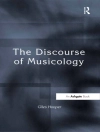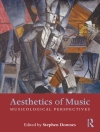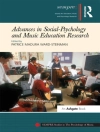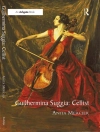This book offers a novel interpretation of the sudden and steep decline of instrumental virtuosity in its critical reception between c. 1815 and c. 1850, documenting it with a large number of examples from Europe’s leading music periodicals at the time. The increasingly hostile critical reception of instrumental virtuosity during this period is interpreted from the perspective of contemporary aesthetics and philosophical conceptions of human subjectivity; the book’s main thesis is that virtuosity qua irreducibly bodily performance generated so much hostility because it was deemed incompatible with, and even threatening to, the new Romantic philosophical conception of music as a radically disembodied, abstract, autonomous art and, moreover, a symbol or model – if only a utopian one – of a similarly autonomous and free human subject, whose freedom and autonomy seemed increasingly untenable in the economic and political context of post-Napoleonic Europe. That is why music, newly reconceived as radically abstract and autonomous, plays such an important part in the philosophy of early German Romantics such as E. T. A. Hoffmann, Schelling, and Schopenhauer, with their growing misgivings about the very possibility of human freedom, and not so much in the preceding generation of thinkers, such as Kant and Hegel, who still believed in the (transcendentally) free subject of the Enlightenment. For the early German Romantics, music becomes a model of human freedom, if freedom could exist. By contrast, virtuosity, irredeemably moored in the perishable human body, ephemeral, and beholden to such base motives as making money and gaining fame, is not only incompatible with music thus conceived, but also threatens to expose it as an illusion, in other words, as irreducibly corporeal, and, by extension, the human subject it was meant to symbolise as likewise an illusion. Only with that in mind, may we begin to understand the hostility of some early to mid-19th-century critics to instrumental virtuosity, which sometimes reached truly bizarre proportions. In order to accomplish this, the book looks at contemporary aesthetics and philosophy, the contemporary reception of virtuosity in performance and composition, and the impact of 19th-century gender ideology on the reception of some leading virtuosi, male and female alike.
Zarko Cvejic
Virtuoso as Subject [PDF ebook]
The Reception of Instrumental Virtuosity, c. 1815-c. 1850
Virtuoso as Subject [PDF ebook]
The Reception of Instrumental Virtuosity, c. 1815-c. 1850
Koop dit e-boek en ontvang er nog 1 GRATIS!
Formaat PDF ● Pagina’s 355 ● ISBN 9781443896825 ● Uitgeverij Cambridge Scholars Publishing ● Gepubliceerd 2016 ● Downloadbare 3 keer ● Valuta EUR ● ID 4913788 ● Kopieerbeveiliging Adobe DRM
Vereist een DRM-compatibele e-boeklezer












